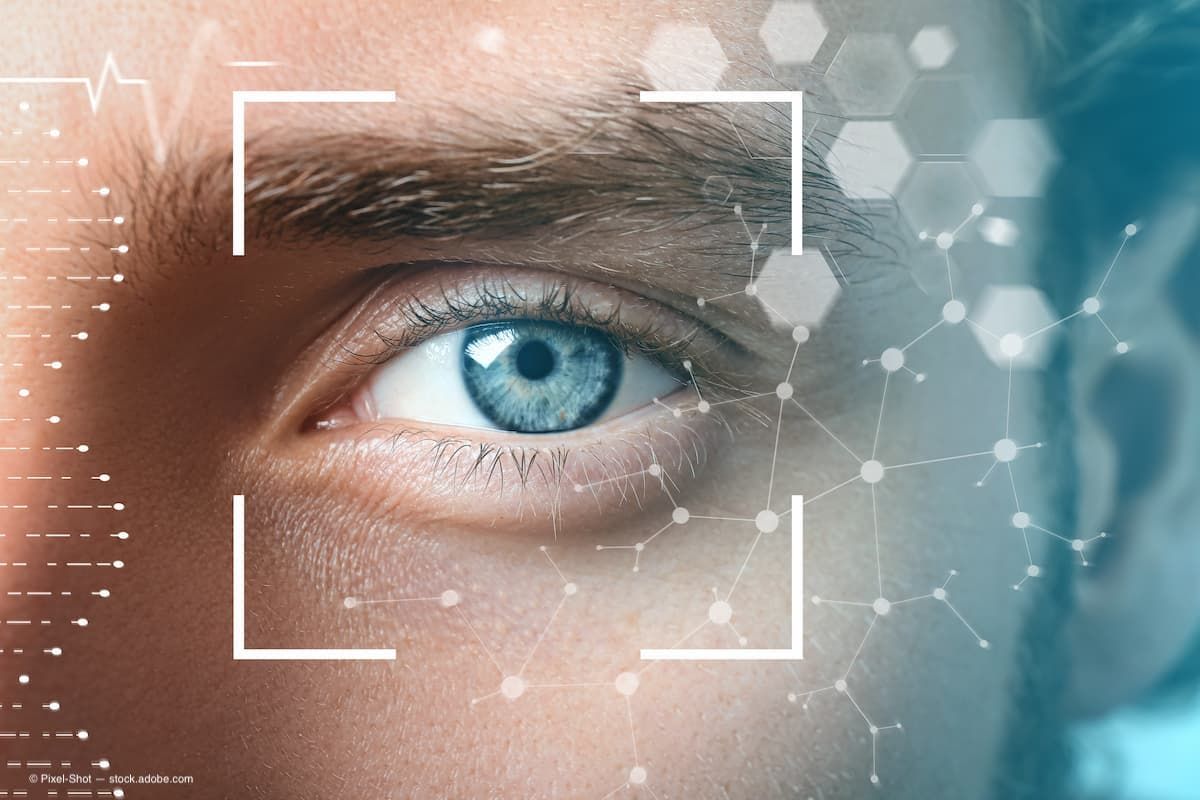News
Article
Study: Scientists develop new therapeutic model for potentially treating incurable eye diseases
Author(s):
A team of researchers have successfully transplanted human microglia into a mouse retina to create a model for studying eye disease treatments, such as diabetic retinopathy, glaucoma and age-related macular degeneration.
(Image Credit: AdobeStock/Pixel-Shot)

A team of researchers has successfully transplanted human microglia cells into a mouse retina to create a model that could be used to test new treatments for incurable eye diseases.
The research,1 published in eLife, offers solid data demonstrating the potential for microglial replacement therapy to treat retinal and central nervous system diseases.
Microglia are the innate immune cells of the central nervous system, which includes the retina, and play essential roles in the normal development of nerves and nerve connections (synapses).
According to eLife, they also can play a less desirable role – driving the development of brain and eye diseases, including age-related macular degeneration (AMD), glaucoma, diabetic retinopathy and uveitis (inflammation of the eye). Normally, the microglia survey environmental changes to maintain normal retinal function. Typically, they quickly respond to injuries, though they can be activated inappropriately, grow in number, and migrate into surrounding tissues.
Lead author Wenxin Ma, PhD, a biologist at the Retinal Neurophysiology Section, National Eye Institute, National Institutes of Health, noted that researchers’ understanding of microglia function comes predominantly from rodent studies due to the difficulty of sourcing human tissue and isolating the microglia from these tissues.
“But there are genetic and functional differences between microglia in mice and humans, so these studies may not accurately represent many human conditions,” Ma said in the news release.
Senior author Wai Wong, vice president of Retinal Disease, Janssen Research and Development LLC, California, noted that researchers took the next step in their study
“To address this concern, researchers have been growing human microglia from human stem cells. We wanted to take this a step further and see if we could transplant human microglia into the mouse retina, to serve as a platform for screening therapeutic drugs as well as explore the potential of microglia transplantation as a therapy itself,” Wong said in the news release.
In an effort to test their theory, the researchers grew microglia from a type of stem cell called human induced pluripotent stem cells (hiPSCs). The scientists then performed several tests to determined whether their cultivated microglia cells functioned as typical immune cells and then transplanted them into mice retina.
According to the eLife news release, the researchers first administered a drug to eradicate the existing population of microglial cells. The researchers then transplanted the new, labelled cells in their place. At 4 and 8 months after transplantation, the human microglial cells had migrated into the retina and were well distributed, and behaving as microglia should – responding to chemical signals within the eye. Moreover, an infusion of hiPSC-microglia cells had no negative effects on the retinal cells.
Researchers demonstrated that the transplanted hiPSC-microglia integrated harmoniously with the existing mouse microglia population, ad they could determine whether the transplanted cells had a normal immune reaction to retinal cell injury. Researchers also found that the cells behaved just as the resident mouse microglia – migrating into the subretinal space to be near damaged cells. This left a lower number of human microglia in their original location, but the transplanted microglia quickly replenished themselves, and stopped multiplying once back to their original numbers.
One key role of microglia is to snap up unhealthy cells in a process called phagocytosis. The researchers noted in the news release that not only did the transplanted microglia move into the damaged regions, they cleaned up the damaged light-receiving cells. The team noted this suggests the transplanted cells mirrored normal functions of resident microglia in the eye.
According to the news release, a limitation of the study is the uncertainty that surrounds its claim that the microglia generated from hiPSCs are mature, and as a result are comparable to human-derived mature microglia cells. Additional work is needed, according to the eLife public review, to claim they are mature human microglia, such as carrying out an analysis with publicly available gene expression data for primary human microglia.
Senior author Wei Li, a senior investigator in the Retinal Neurophysiology Section, National Eye Institute, National Institutes of Health, pointed out that gaining an understanding of microglial cell function is key for studying disease mechanisms and finding accurate targets for treating degenerative retinal diseases.
“Our model provides a new way of studying the functions of human microglia within disease mechanisms and a platform for evaluating the potential therapeutic effects of microglia cell transplants from diverse patient backgrounds,” Li concluded.
Reference:
Ma Wenxin, Zhao Lian, Xu Biying, Fariss Robert N., Michael Redmond T., Zou Jizhong, Wong Wai T., Li Wei (2023) Human iPSC-derived Microglia Cells Integrated into Mouse Retina and Recapitulated Features of Endogenous Microglia Cells eLife 12:RP90695. D
Newsletter
Don’t miss out—get Ophthalmology Times updates on the latest clinical advancements and expert interviews, straight to your inbox.




